Cocoa percentage in chocolate: putting an end to a popular misconception
“True chocolate connoisseurs only eat dark chocolate with at least 70% cocoa”. At Valrhona, we are constantly battling to break this common misconception. We want to say it loud and clear: NO! Chocolate with a high percentage of cocoa is not necessarily high-quality chocolate.
But if we cannot rely on the cocoa percentage on a chocolate label, what do we rely on?
Read on and you will understand!
Why is a high cocoa percentage deceptive?
To put it simply, asserting that the quality of chocolate depends on its cocoa content alone would be as reductive as saying that the quality of a wine depends on its grape content. As everyone knows, all wines are made from grapes, yet not all are a Château Margaux. Quality depends on other factors - on the grape variety, for example. The same goes for chocolate. Read on to find out more.
So what makes a quality chocolate?
That’s a big question! As we explained in the article “Choosing your chocolate”: the quality of cocoa beans is the first key to a chocolate’s success. In other words, a chocolate made from 70% cocoa in which the cocoa beans are insufficiently fermented or poor quality, is almost certain to not be very good, as it lacks aromatic nuance. As for flavor, the origin of the cocoa beans also plays an important role since, depending on the origin of the beans, chocolate can be floral, fruity, woody, etc.
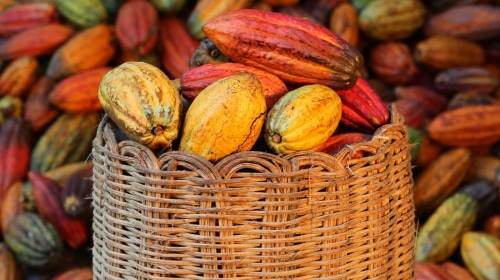
So good cocoa beans = good chocolate?
That is the idea, yes, but it still doesn’t tell the whole story!
The care taken when processing cocoa beans is also essential to obtaining good-quality chocolate. At Valrhona, processing involves 9 key stages:
- Cleaning and stone-picking to remove any foreign matter found in the beans.
- Debacterization to remove most of the bacterial flora caused by the fermentation of the beans.
- Roast to develop the taste of the chocolate. As the temperature and roasting time vary depending on the origin of the beans and the type of cocoa. At Valrhona we roast our cocoa beans in batches (and not continuously).
- Crushing to harvest cacao nibs (cocoa bean pieces).
- Blending of varying nibs depending on recipe and grinding to obtain the cocoa paste or liqueur. Unlike Valrhona, which works on a “bean to bar” basis, many chocolatiers start making their chocolate from this cocoa paste/liqueur.
- Mixing cocoa paste/cocoa liqueur with other ingredients depending on the recipe (sugar, milk, vanilla, etc.).
- Refining to obtain a smooth and creamy texture that prevents the appearance of “chocolate grains”.
- Conching to reveal the flavors of chocolate by kneading the paste when warm.
- Tempering to allow cocoa butter to harden in a stable and shiny form.
Below is an image of the process of roasting cocoa beans. This process is controlled by a roasting specialist, who adjusts the roasting time and temperature according to the profile of the beans received, to release the full potential of their aromatic power.
Finally, what does the cocoa percentage represent?
The cocoa percentage displayed on the chocolate is taken from the sum of cocoa beans (which naturally contain 48 to 56% cocoa butter depending on their origin) and cocoa butter (with neutral taste) added to most chocolates, to give it optimal fluidity.
And what is the remaining percentage?
Mostly added sugar! In other words, a dark chocolate with 70% cocoa contains 30% sugar. Also, the higher a chocolate’s cocoa percentage, the more fat it contains.
Did you know that if a chocolate contained 100% cocoa beans (and therefore no sugar), regulations would prohibit it from being called chocolate?
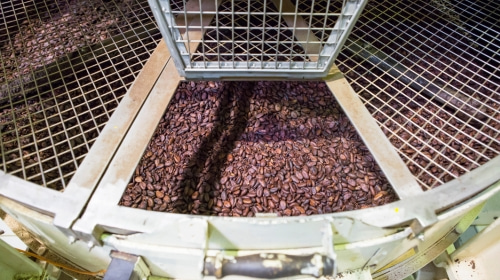
Finally, what does the cocoa percentage represent?
The cocoa percentage displayed on the chocolate is taken from the sum of cocoa beans (which naturally contain 48 to 56% cocoa butter depending on their origin) and cocoa butter (with neutral taste) added to most chocolates, to give it optimal fluidity.
And what is the remaining percentage?
Mostly added sugar! In other words, a dark chocolate with 70% cocoa contains 30% sugar. Also, the higher a chocolate’s cocoa percentage, the more fat it contains.
Did you know that if a chocolate contained 100% cocoa beans (and therefore no sugar), regulations would prohibit it from being called chocolate?
Composition of Guanaja dark chocolate 70%:
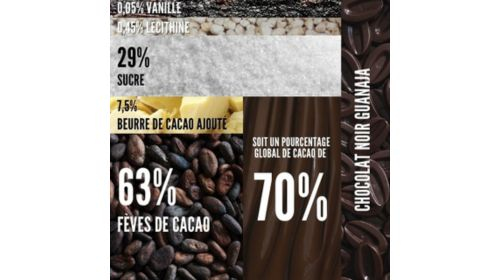
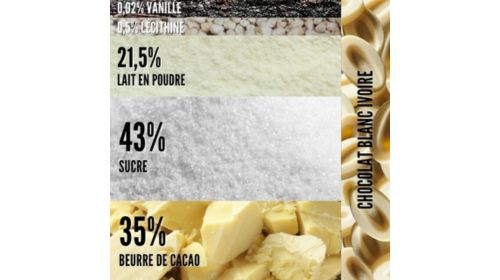
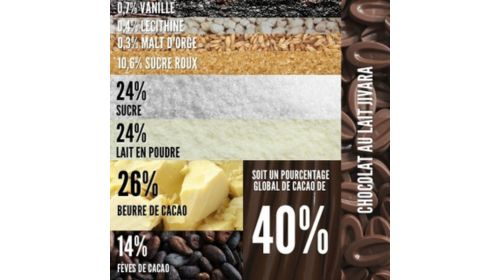
Is sugar bad?
Increasingly criticized and demonized, sugar increasingly seems to be public enemy number one. However, by removing the bitterness or excessive acidity of a chocolate, by supporting the lighter notes (floral and fruity) that are attributes of the finest cocoa (islands of the Caribbean and Madagascar, South America), sugar boosts the flavor of chocolates.
At Valrhona, we play with the colors and flavors of sugars. Unlike refined white beet sugar, which has a neutral taste, brown, light brown, unrefined whole, granulated or unrefined cane sugars provide unique notes (such as liquorice) that harmoniously complement the range of cocoa aromas. Playing around with these flavors is all the more important when creating recipes for milk or white chocolates, which contain fewer or no cocoa beans.
What’s Valrhona’s secret to making good chocolate?
Don’t tell anyone, but it’s all about balance, portions, sometimes blending, but never just about the percentage! And for good reason: the ideal percentage of chocolate depends on the origin of the cocoa beans: it is therefore not the same from one bean to another. “The important thing is to respect the origin of a bean and to use its potential to create the best chocolate,” advises Christophe Devaux, Head of Research and Development at Valrhona. “It is up to the teams to properly analyze the aromatic profile of each bean origin and adjust the recipe to obtain the right percentage. If the taste is too strong, if the flavors (bitterness, acidity, astringency) take too much precedence over the aromas, it is essential to reduce the quantity of beans,” he adds. So there you have it!
A helpful memo: the mini guide to Valrhona chocolates
Guanaja 70% cocoa dark chocolate: An iconic chocolate from Valrhona, it is a blend of several Grands Crus and reveals subtle nuts and roasted coffee aromas.
Caraïbe 66% cocoa dark chocolate : This chocolate is a favorite of children and loved by all. It reveals round chocolate and roasted nut notes against a slightly woody finish.
Equatoriale Noir 55% cocoa dark chocolate: A smooth, round chocolate made from a blend of African cocoa beans.
Oriado 60% dark chocolate, is an organic chocolate with the merest hint of sweetness, punctuated by ripe fruit and jam notes.
Equatoriale Lactée 35% cocoa milk chocolate: The flavors of this chocolate are as mellow as its color.
Jivara 40% milk chocolate: Creamy and vanilla-inflected, this is the only milk chocolate to offer such a powerful cocoa flavor.
Ivoire 35% cocoa butter white chocolate: Its slightly pearlescent color and its warm milky aromas with mild vanilla notes are its defining features.
Blonde Dulcey 35% chocolate: With caramelized shortbread notes, Blonde Dulcey 35% chocolate is a treat by itself.
 Microsoft Edge
Microsoft Edge
 Google Chrome
Google Chrome
 Mozilla Firefox
Mozilla Firefox
 Opéra
Opéra


